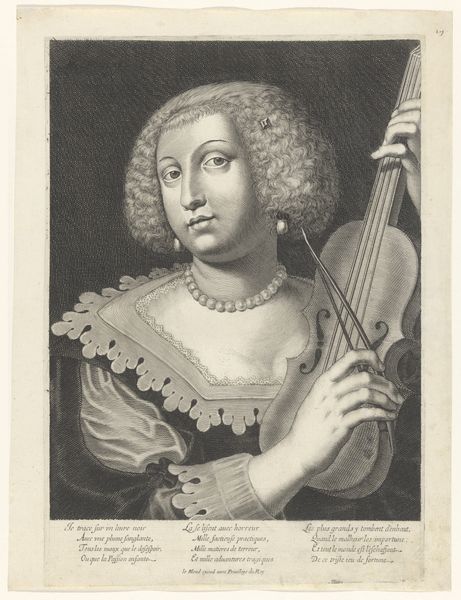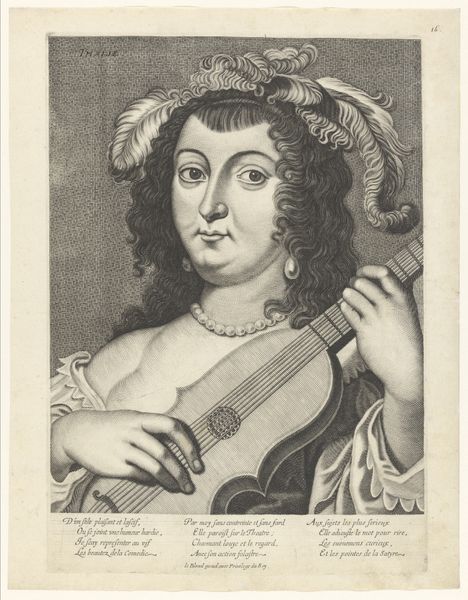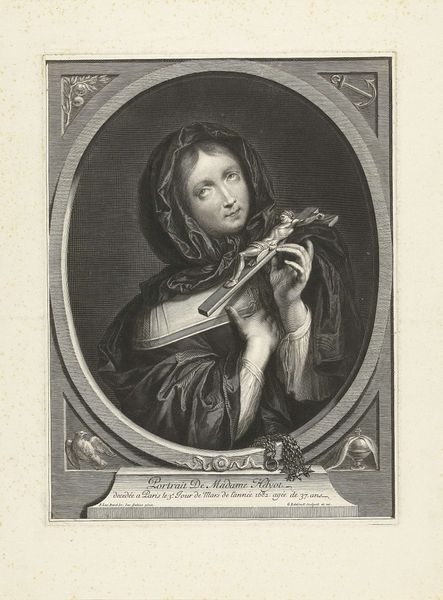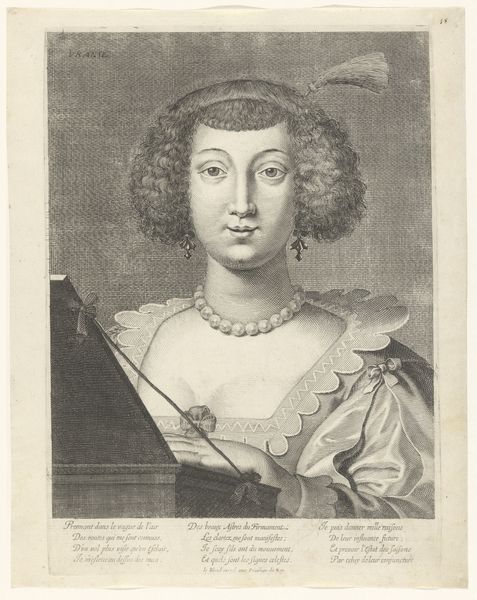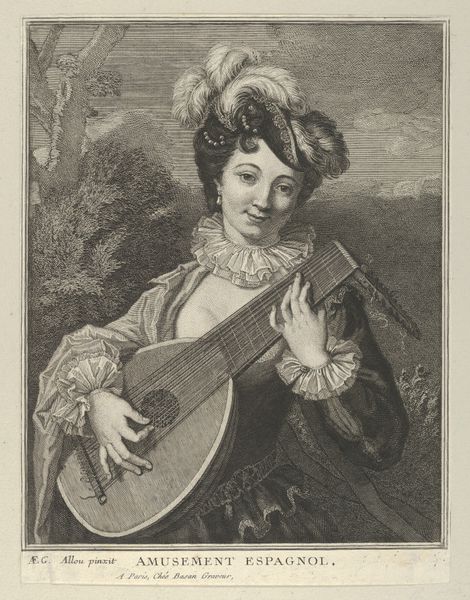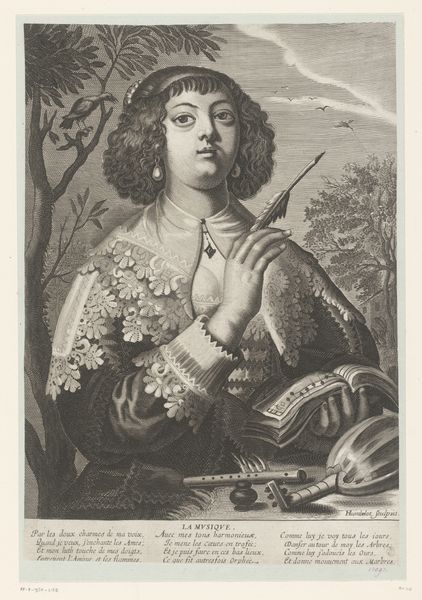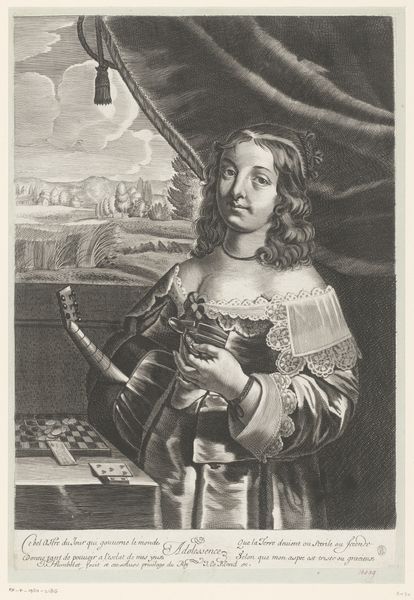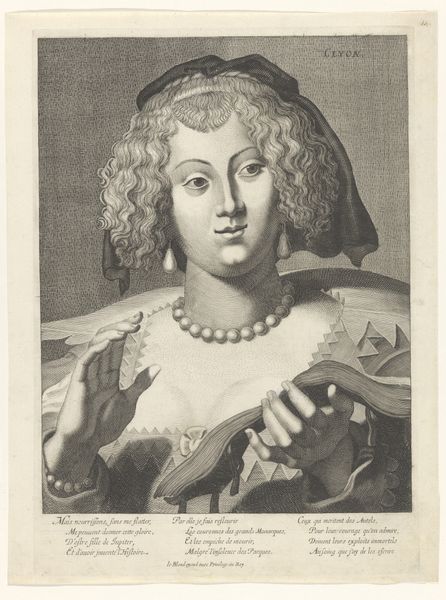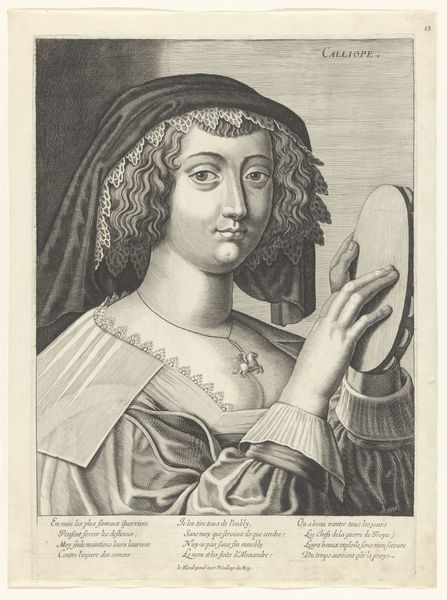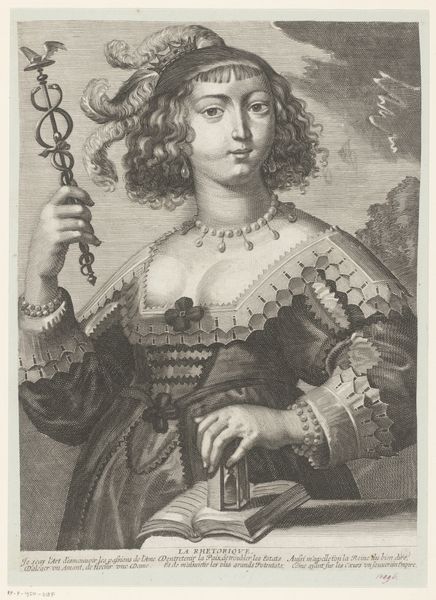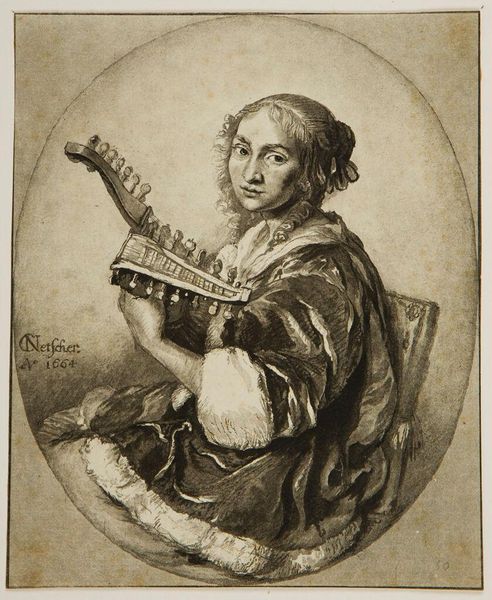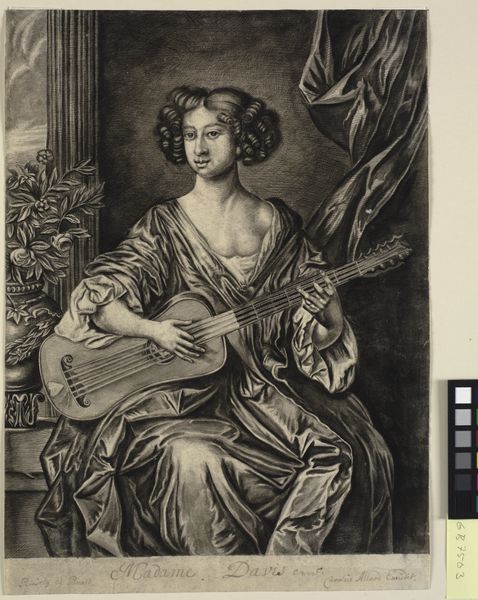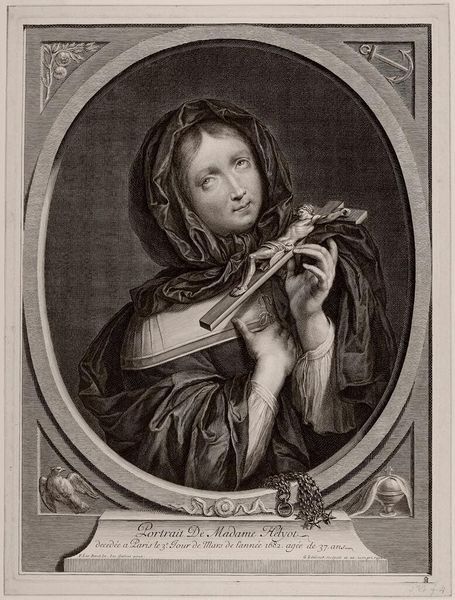
print, engraving
#
portrait
#
baroque
# print
#
old engraving style
#
historical photography
#
history-painting
#
engraving
Dimensions: height 320 mm, width 280 mm
Copyright: Rijks Museum: Open Domain
Curator: Immediately, I see the serenity. The gentle curves, the soft light... it’s incredibly calming. Editor: Here we have Jean (I) Leblond's "Erato," a Baroque engraving dating back to approximately 1630-1635, now residing here at the Rijksmuseum. Leblond captures Erato, the muse of lyric poetry, quite beautifully. I am interested in exploring her role as not only the inspiration behind love poetry, but also a representation of gender within the social and artistic expectations of the Baroque period. Curator: Yes, the presence of the harp immediately directs our attention. It’s more than an instrument, isn't it? It seems to speak of a certain societal standing through this depiction of an intellectual lady and perhaps is referencing traditions of courtly love or aristocratic artistic interest. Editor: Absolutely, her presence can be interpreted as more than a simple representation. It engages with prevailing social narratives about femininity and artistic creation, embodying and, to an extent, shaping these discussions by presenting a complex vision of female identity through both visual expression and allegory. It is noteworthy to analyze whether women creatives were afforded this spotlight to promote female allegories in a positive light. Curator: Thinking of the period, too, these engravings would have circulated widely. To whom? I mean who were these kinds of allegorical images geared toward? Was it a commentary to be had about an aristocratic lady as being viewed upon like the figure of Erato, her role within art being elevated? Editor: It circulated amongst intellectual circles but the consumption by broader audiences cannot be overlooked. Considering gender theory, did representations like Erato, a female muse, play a role in defining acceptable female engagement with art and culture? Who did this historical "historical photography" really target? I believe a modern context would challenge viewers to inspect those biases and preconceptions that shape interpretations of Leblond's time period. Curator: It strikes me, we’ve barely touched upon Erato’s direct meaning. Instead we ask so many questions and propose more modern frameworks. What an encapsulation of that very interrelation between visual metaphor and cultural impact—a lasting echo! Editor: I agree, viewing it through both our subjective experience and historicized ideas of that era grants it renewed cultural importance.
Comments
No comments
Be the first to comment and join the conversation on the ultimate creative platform.
